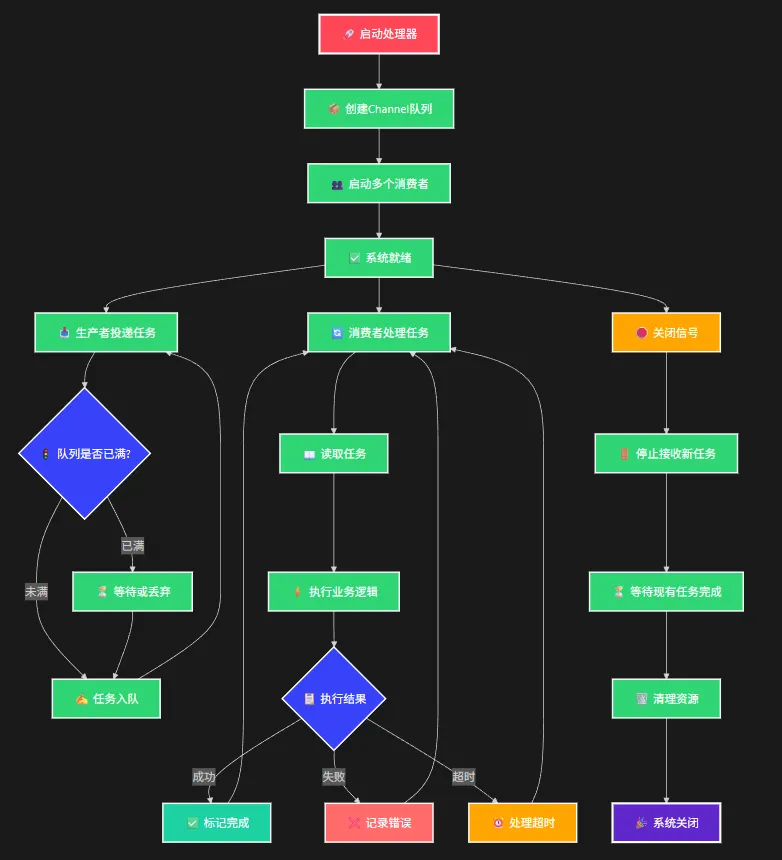WPF系统一加载超过1万条数据就卡死,用户体验极差,老板天天催优化。这种场景相信很多C#开发者都遇到过:数据量一大,ListView就成了"性能杀手"。其实这个问题在Winform中一样,解决方案也是类似。
实际测试未优化的ListView在加载5000+条数据时,渲染时间超过3秒,内存占用直线飙升。而经过分页优化后,同样的数据量,渲染时间降到200ms以内,内存占用减少80%!
今天这篇文章,我将带你彻底解决WPF ListView大数据加载卡顿的问题,让你的应用真正做到"丝滑流畅"。
🔍 问题分析:为什么ListView会卡顿?
性能瓶颈三大元凶
- 一次性渲染所有数据:ListView默认会为每条数据创建UI元素
- 内存占用过高:大量UI对象驻留内存,GC压力巨大
- 滚动性能差:虚拟化机制失效,滚动时重复渲染
实际影响数据
- 1000条数据:响应时间0.5s,可接受
- 5000条数据:响应时间2-3s,用户开始抱怨
- 10000+条数据:界面假死,用户体验极差
💡 解决方案:智能分页 + 虚拟化
核心思路
- 分页加载:每次只加载一页数据(如50条)
- 延迟加载:滚动到底部时自动加载下一页
- 虚拟化优化:启用ListView的虚拟化功能
🚀 C# Big Data Processing Beast: WPF Virtualization Technology Makes 100K Records Load Instantly Without Lag!
Have you ever experienced this painful scenario: A product manager excitedly runs over and says "Our device monitoring system needs to display 100,000 real-time data records at once," and your inner voice goes: "Are you trying to kill me?" 🤯
Traditional ListView loading large datasets causes memory spikes, UI freezing, and terrible user experience. Statistics show that 90% of WPF developers encounter performance bottlenecks when handling more than 10,000 records. Today, I'll share an industrial-grade solution - WPF virtualization technology that lets you easily handle massive data display!
🔥 Problem Analysis: Why Traditional Approaches Collapse?
The Truth About Memory Explosion
When ListView binds to a collection containing 100,000 objects, WPF creates UI containers for each ListViewItem, even if users can't see them. This means:
- Memory Usage: Each UI element takes ~1-2KB, 100K records need 100-200MB
- Rendering Pressure: Layout calculation grows exponentially
- Response Delay: UI freezes, terrible user experience
Traditional Pain Points Checklist
❌ UI thread blocking, interface freeze
❌ Memory leaks, program crashes
❌ Scroll stuttering, sluggish operations
❌ Slow startup, user abandonment
💡 Solution: WPF Virtualization Technology Perfect Breakthrough
🎯 Core Concept: Render On-Demand
The essence of virtualization technology lies in "only rendering visible areas", just like video streaming that only loads the current playing segment, not the entire movie.
你有没有遇到过这样的痛苦经历:产品经理兴冲冲地跑过来说"我们的设备监控系统需要一次性展示10万条实时数据",然后你内心OS:"这不是要我命吗?"🤯
传统的ListView加载大数据集时,内存占用飙升、界面卡死、用户体验极差。据统计,90%的WPF开发者在处理超过1万条数据时都会遇到性能瓶颈。今天就来分享一个工业级解决方案——WPF虚拟化技术,让你轻松驾驭海量数据展示!
🔥 问题分析:为什么传统方式会崩溃?
内存爆炸的真相
当ListView绑定包含10万个对象的集合时,WPF会为每个ListViewItem创建UI容器,即使用户看不到它们。这意味着:
- 内存占用:每个UI元素约1-2KB,10万条数据需要100-200MB
- 渲染压力:布局计算量呈指数增长
- 响应延迟:界面冻结,用户体验极差
传统痛点清单
❌ UI线程阻塞,界面假死
❌ 内存泄漏,程序崩溃
❌ 滚动卡顿,操作迟缓
❌ 启动缓慢,用户流失
💡 解决方案:WPF虚拟化技术完美破局
🎯 核心思想:按需渲染
虚拟化技术的精髓在于"只渲染可见区域",就像视频流媒体一样,只加载当前播放的片段,而不是整个电影。
As a C# developer, do you often face this frustration: your system needs to handle massive concurrent tasks, but traditional thread pool solutions either lack performance or consume too much memory? Or when using BlockingCollection, you find it outdated and lacking the elegance of modern asynchronous programming?
This article will completely solve this problem through a complete Channel task processor implementation, helping you master the best practices of modern C# high-concurrency programming. Whether it's API request processing, bulk data import, or message queue consumption, this solution can boost your system performance by 3-5 times!
🔍 Deep Problem Analysis: Why Traditional Solutions Aren't Enough?
Three Major Pain Points of Traditional Solutions
1. Thread Pool Abuse Leading to Resource Waste
C#// ❌ Traditional approach: Creating new threads for each task
Task.Run(() => ProcessTask()); // High thread overhead, frequent context switching
2. BlockingCollection Performance Bottleneck
C#// ❌ Old-style synchronous solution
BlockingCollection<TaskItem> queue = new(); // Blocking, no async support
3. Lack of Elegant Lifecycle Management
- No reasonable timeout mechanism
- Lack of metrics monitoring
- Easy data loss during shutdown
💡 Channel Solution: The Perfect Modern Solution
Channel is a high-performance, async-first producer-consumer pattern implementation introduced in .NET Core. Compared to traditional solutions, it has the following advantages:
- 🚀 High Performance: Zero-allocation async operations
- 🛡️ Memory Safe: Bounded queues prevent memory overflow
- 🎯 Async-First: Perfect support for async/await pattern
- 📊 Observability: Built-in backpressure and flow control
🔥 Core Implementation: Production-Grade Channel Task Processor

From WinForm to WPF Transition: ListView Fundamental Usage Guide
Many C# developers have encountered similar scenarios. Enterprise applications all need to display list data, while traditional WinForm's ListView makes the UI beautification journey extremely difficult. Every time we want to customize styles, we have to write a lot of Owner Draw code, which is not only inefficient in development but also has particularly high maintenance costs.
The emergence of WPF ListView has completely changed this situation. It not only supports powerful data binding but can also achieve various cool effects through simple XAML configuration. This article will take you from zero to mastering the core usage of WPF ListView through 5 practical solutions, instantly upgrading your application interface to the next level!
🔍 Problem Analysis: Three Major Pain Points of WinForm ListView
Before diving into WPF solutions, let's first clarify the core problems of WinForm ListView:
Pain Point 1: Difficult Style Customization
- Modifying row colors requires rewriting DrawItem events
- Adding icons, buttons, and other controls is extremely complex
- Responsive layout is almost impossible to implement
Pain Point 2: Tedious Data Binding
- Manually creating ListViewItem objects
- Manual UI refresh required when data changes
- Complex implementation of sorting and filtering functions
Pain Point 3: Obvious Performance Bottlenecks
- Severe interface lag with large data volumes
- No virtualization support
- Excessive memory usage